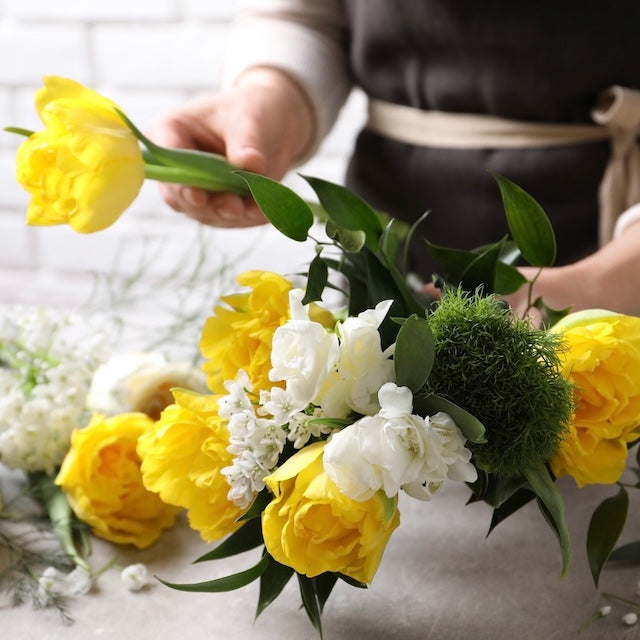Flower arranging is an art form that allows you to express creativity, create stunning displays, and bring the beauty of nature into your home. If you're new to flower arranging, fear not! In this beginner's guide, we'll provide you with tips and tricks to help you create breathtaking bouquets that will impress your guests and bring joy to any space. Let's dive in and unlock the secrets to crafting stunning floral arrangements.
- Start with Fresh Flowers: The key to a beautiful bouquet is starting with fresh, high-quality flowers. Visit your local florist or farmer's market to ensure you have access to a wide variety of fresh blooms. Look for flowers with firm stems, vibrant colours, and petals that are just beginning to open. Fresh flowers will not only last longer but will also enhance the overall visual appeal of your arrangement.
- Gather Essential Tools: Before you begin arranging, gather the necessary tools. These may include floral shears or sharp scissors, a clean vase or container, floral foam or a frog for support, floral tape, and clear floral preservative. Having the right tools on hand will make the arranging process much easier and ensure professional-looking results.
- Plan and Prepare: Before diving into arranging, take a moment to plan and prepare. Consider the size and shape of the container you'll be using and envision the overall look you want to achieve. Think about colour schemes, textures, and the mood you wish to convey. Having a plan in mind will guide your flower selection and arrangement process.
- Create a Focal Point: Every stunning bouquet needs a focal point or centerpiece. Choose one or a few standout flowers to serve as the focal point of your arrangement. These flowers should be larger or more eye-catching, commanding attention and setting the tone for the entire bouquet.
- Build Layers and Add Variety: To create depth and visual interest, build layers within your arrangement. Start with the focal flowers, then gradually add other blooms of different sizes, shapes, and colours. Incorporate flowers with different textures, such as delicate blossoms, fluffy blooms, and spiky accents. This variety will add dimension and create a visually pleasing composition.
- Consider Proportions and Balance: Maintaining proper proportions and balance is essential for a well-arranged bouquet. Balance the size and placement of flowers throughout the arrangement to create a harmonious look. Avoid overcrowding or overpowering one area with too many blooms. Step back occasionally to assess the balance and make adjustments as needed.
- Don't Forget Foliage and Fillers: Foliage and fillers play an important role in enhancing the overall arrangement. They add texture, fill in empty spaces, and provide a backdrop for the flowers to shine. Incorporate various types of foliage, such as eucalyptus, ferns, or ivy, to create a lush and natural look.
- Water and Care for Your Bouquet: Once your arrangement is complete, it's essential to give it proper care to ensure its longevity. Fill the vase with clean water mixed with floral preservative to keep the flowers hydrated. Trim the stems periodically and change the water every few days. Follow care instructions for specific flower types to maintain the freshness and beauty of your bouquet.
Conclusion: With these beginner-friendly tips and tricks, you're well-equipped to embark on your flower arranging journey. Remember to start with fresh flowers, plan your design, create a focal point, and add variety and balance to your arrangement. Enjoy the process of experimenting with different flowers, colours, and textures to create stunning bouquets that bring beauty and joy into your life and the lives of others. Let your creativity blossom and embrace the art of flower arranging!


